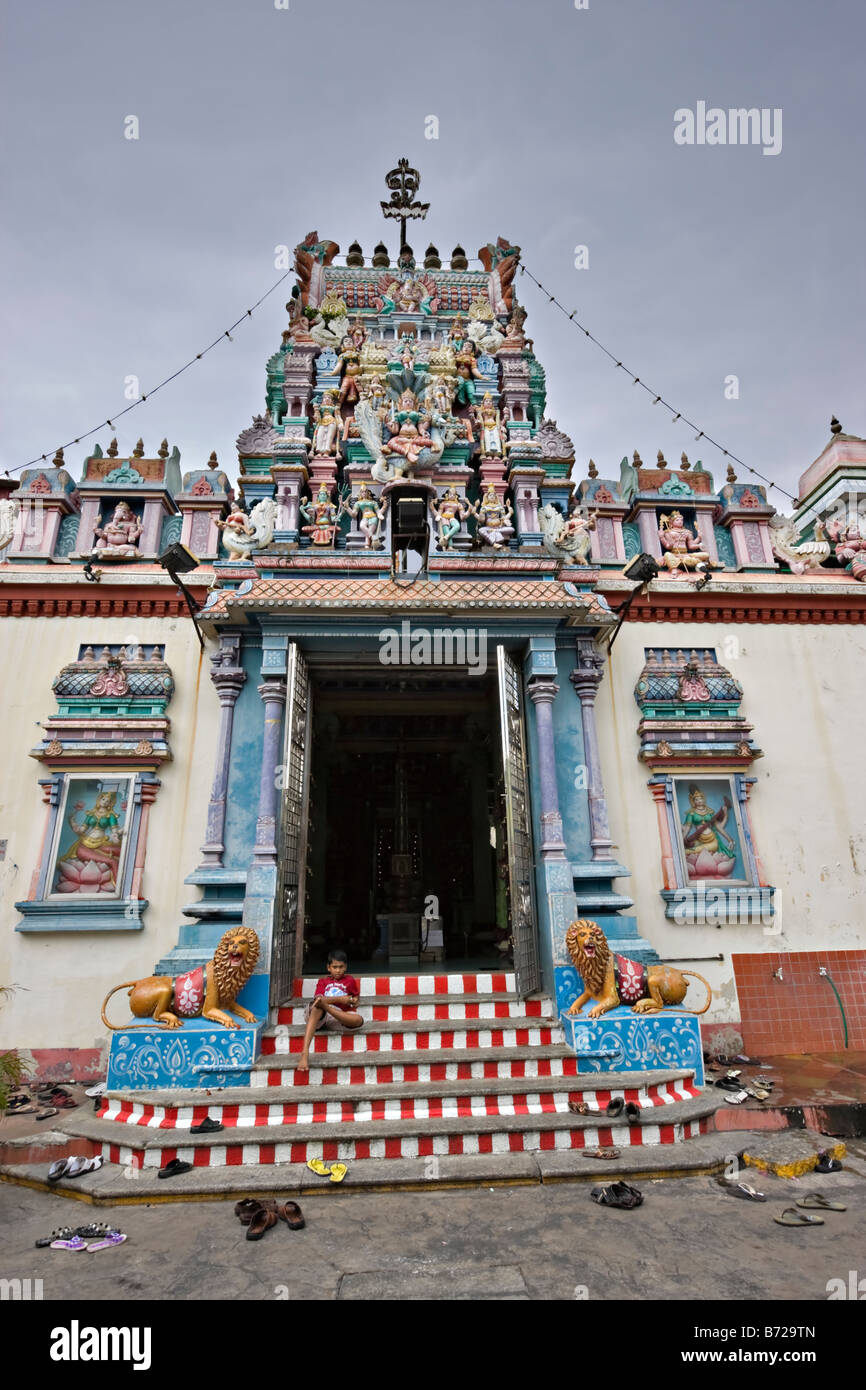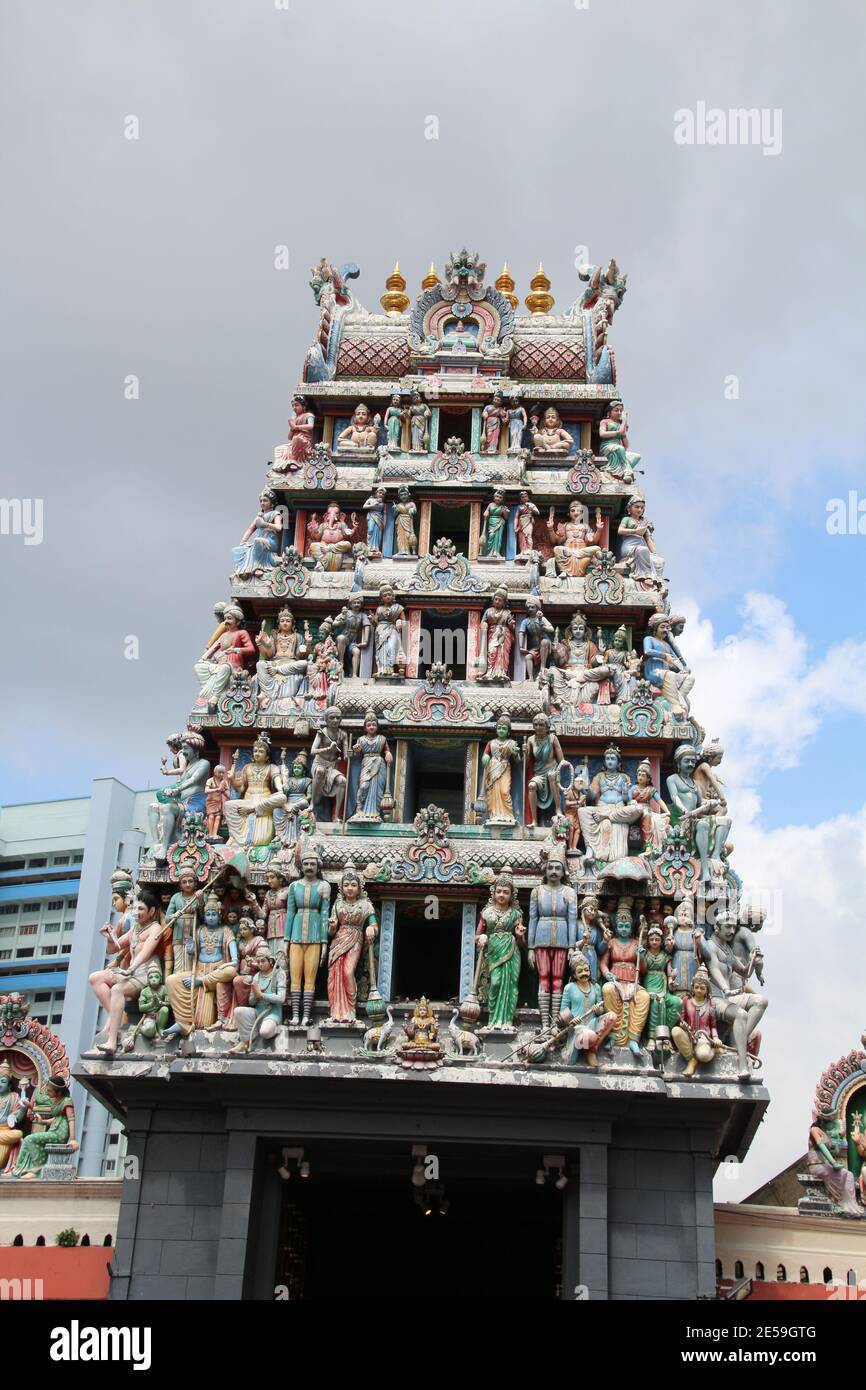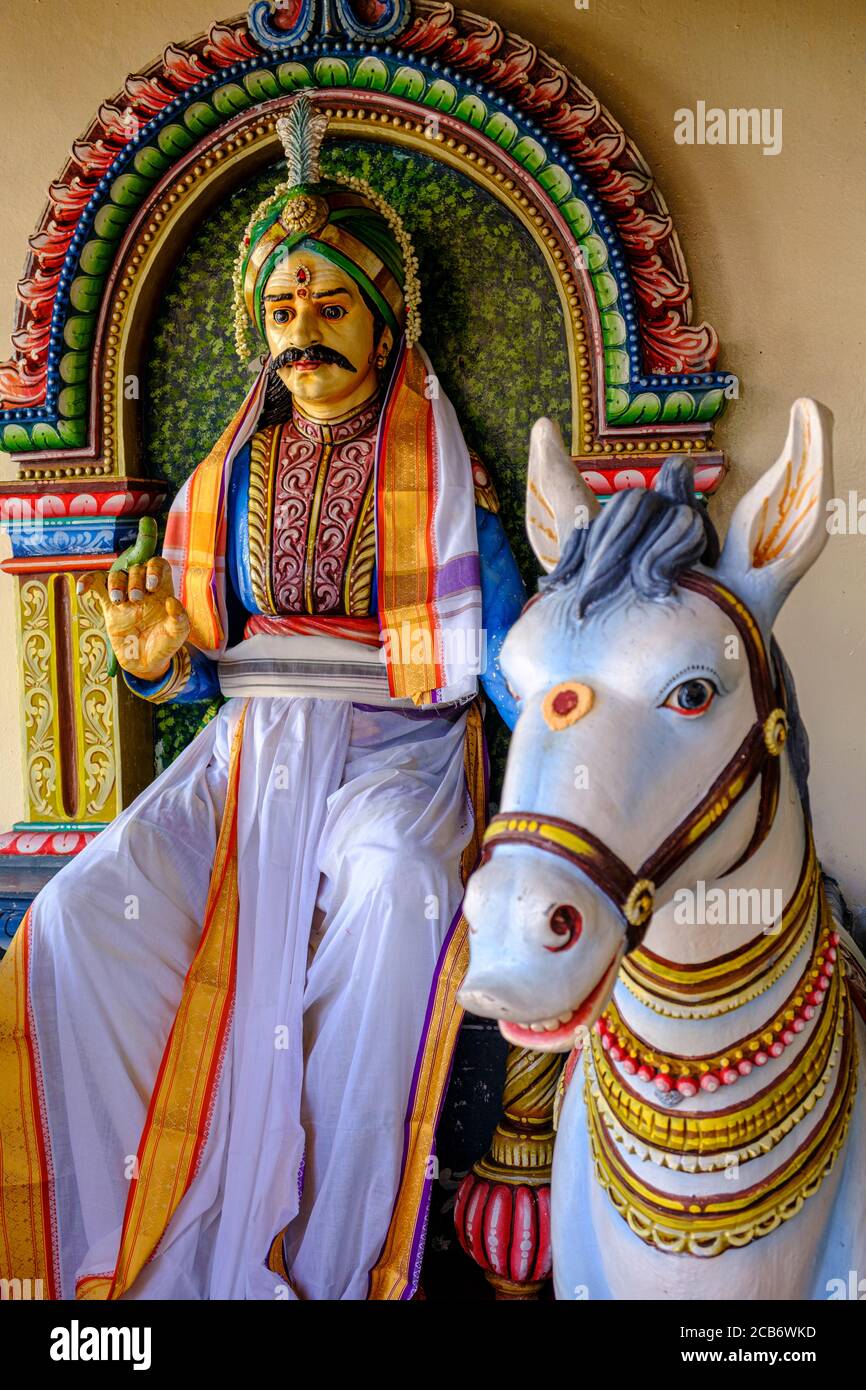


The skills used in this process are similar to those used in fine art or jewellery making. So far, more than six million mosaic tiles have been used, all of which have been selected, cut and placed by hand. Mosaics of Sri Maha Mariamman and Shiva have been installed at the entrance Nine Hindu deities adorn the vaulted ceiling, while additional artworks decorate the walls and niches. The latest phase sees the temple's central nave completed rejuvenated. Gold and gold leaf mosaic were also applied to the exterior. In the first phase, two artworks were created for the temple entrance, in the images of Sri Maha Mariamman and Shiva. SICIS has so far completed the first two phases of the project. The Sri Mariamman Temple was built in 1879 by Vaithi Padayatchi The process involved using the company's patented double indirect method, a highly skilled mosaic technique developed by company president Maurizio Placuzzi in the 1980s. There, more than 80 SICIS mosaic artists have worked together to precisely colour match every shape and detail, using tesserae made from gold and Murano glass. To ensure the mosaics would be identical to the original artworks, artists created replica paintings that could be transported to the company's laboratories in Ravenna, northern Italy. SICIS has created nine Hindu deities for the shrine's vaulted ceiling The task given to SICIS was to replace all of the frescoes in the temple, using both digital tools and tiling craft expertise. The main shrine is dedicated to Sri Maha Mariamman, while the other two pay tribute to Ganesh and Kartik. The temple comprises a six-metre-high entrance tower, known as a gopura, and three sacred buildings. The Sri Mariamman Temple was built in 1879 by Vaithi Padayatchi, one of many Tamil Hindu immigrants that came to Thailand to escape colonial rule in India.

The designs use tesserae made from gold and Murano glass


 0 kommentar(er)
0 kommentar(er)
